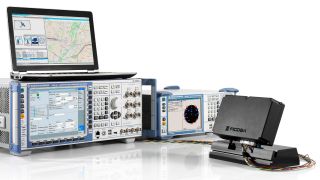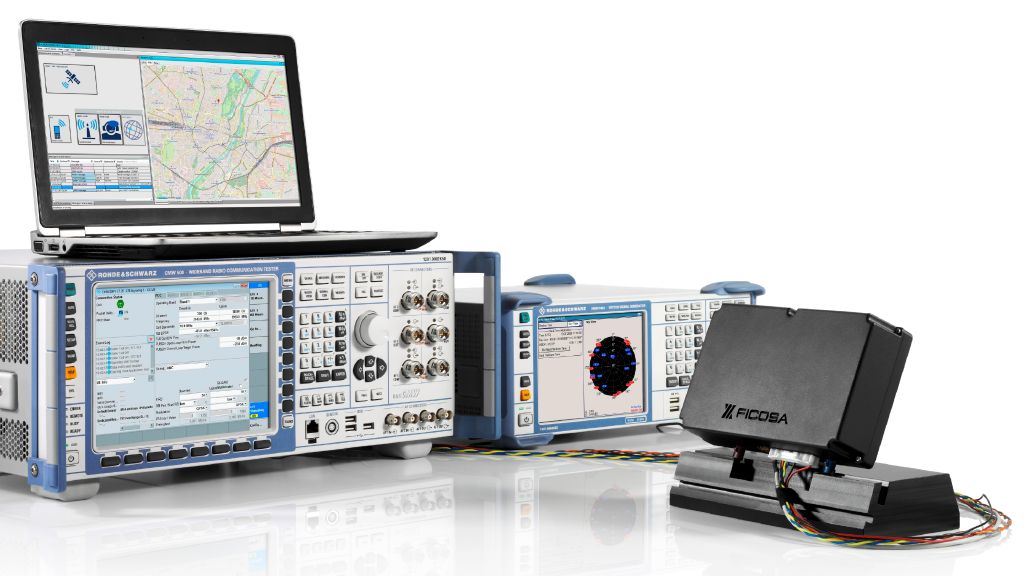Verification of next generation eCall functionality in an IVS
eCall is deployed in Europe and is required by law in new cars as of March 2018. Next generation eCall (NG eCall) is built on LTE and 5G.

eCall is deployed in Europe and is required by law in new cars as of March 2018. Next generation eCall (NG eCall) is built on LTE and 5G.


Basic setup for verification of next generation eCall functionality in an IVS.
eCall is deployed in Europe and is required by law in new cars as of March 2018. Today’s eCall deployments are based on ETSI and CEN standards, whose development started more than a decade ago. The system uses an inband modem to transfer the eCall minimum set of data (MSD) in a circuit-switched (CS) GSM voice channel over a 112 emergency call. 100 % penetration of the system is estimated to be achieved by 2035, yet operators in Europe have already announced they will phase out support of CS GSM and UMTS networks over the next decade and want to replace it with 4G LTE and 5G infrastructures. This will also have an impact on the 112 emergency call, which will be replaced by an IMS emergency call for packet-switched (PS, i.e. IP-based) networks like LTE and 5G. The new environment provides dramatic advantages in term of capabilities compared with the legacy eCall approach.
NG eCall is built on LTE, which ensures a much faster and also more reliable MSD transfer. Speech communications are not interrupted during MSD transmission and it is easy to add enhancements such as transmitting more than 140 byte in an IP network. It would also be possible to transfer additional media e.g. video from dash cameras, text from speech or remote control of car features (sounding the horn, flashing the lights, locking/unlocking doors, disabling the ignition, etc.). But this change will also impact vehicle manufacturers (OEMs) and their suppliers (Tier1s) because cars are typically on the road for about 15 years. One issue is how in-band modem eCall deployments in cars will continue to be supported while network technology migrates to fully IP-based systems and vehicles are being prepared for next generation eCall.
As a safety system, eCall must be highly reliable and correctly transmit MSD data. This is particularly critical in cellular networks, especially when the technology in the backend dramatically changes, such as the change from CS based networks to a PS system. Testing NG eCall system performance and preparing the vehicle for the future only through field testing in real-world mobile network and satellite environments can easily become time-consuming, costly and very challenging since environmental conditions can change. And test results, especially those related to IMS (which is part of the core network), are hard to obtain and are not reproducible in such an environment.
Rohde & Schwarz offers the market-leading test solution for GSM based eCall. The T&M expert has extended the functionality of the R&S®CMW500 wideband radio communication tester with the R&S®CMW-KA096 test software for LTE based NG eCall.
The R&S®CMW-KA096 application software simulates a NG eCall capable public safety answering point (PSAP) and remotely controls the R&S®CMW500, which simulates an LTE cellular network (including the required IMS infrastructure). All under full control in your lab.
The described setup allows you, for example, to verify whether the eCall in-vehicle system (IVS) is able to trigger an NG eCall, select the right network, transmit the correct MSD data and establish the voice connection via a voice-over-LTE (VoLTE) call to the PSAP. The received MSD is available in RAW format and in a decoded format. The MSD shows all transmitted values, including mandatory fields such as position information. This can be done fully independently of a real-world mobile network. In combination with the R&S®SMBV100A vector signal generator, the solution also supports GNSS position accuracy measurements based on the received MSD.


Test setup for vehicle emergency services (eCall, ERA-GLONASS, NG eCall).
The R&S®CMW500 in combination with the R&S®CMWKA094/-KA095 PSAP options and the R&S®SMBV100A is a powerful solution for functional testing, standard-compliant conformance testing and performance testing of your eCall and ERA-GLONASS modules. The R&S®CMW-KA096 extension for next generation eCall allows you to prepare today for future LTE and IMS based eCall systems for vehicles. All in a lab environment, which saves time, reduces cost and minimizes field testing efforts. This setup is also easily upgradeable to multi-cell scenarios, which is important for interoperability tests during the phase where there is limited NG eCall support either in the network or in the PSAP. In this case, the system must test the required fallback scenarios to legacy eCall using the in-band modem.
This test solution from Rohde & Schwarz is a future-ready investment, not just for legacy eCall but also for LTE and IMS based next generation eCall system testing.